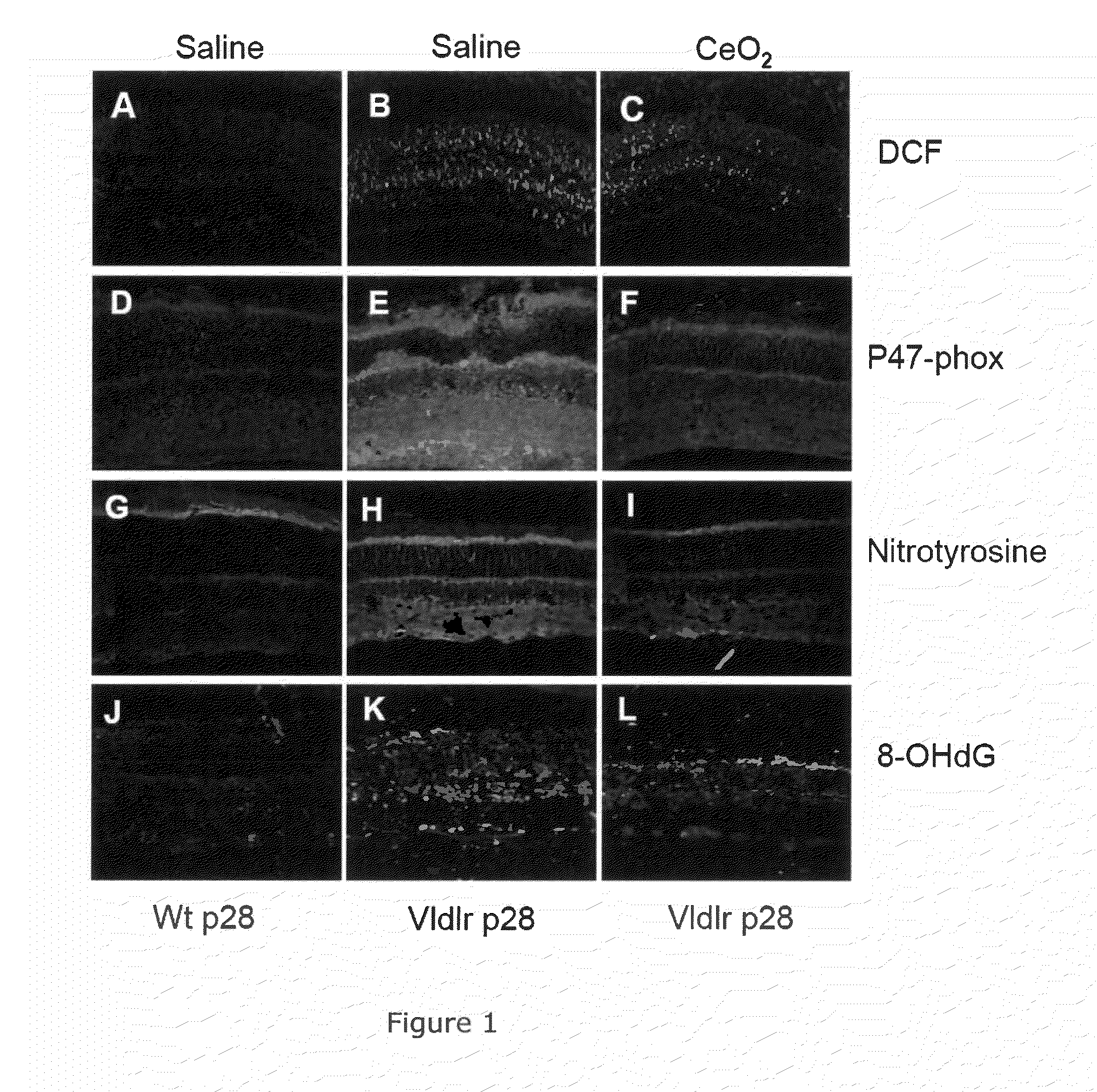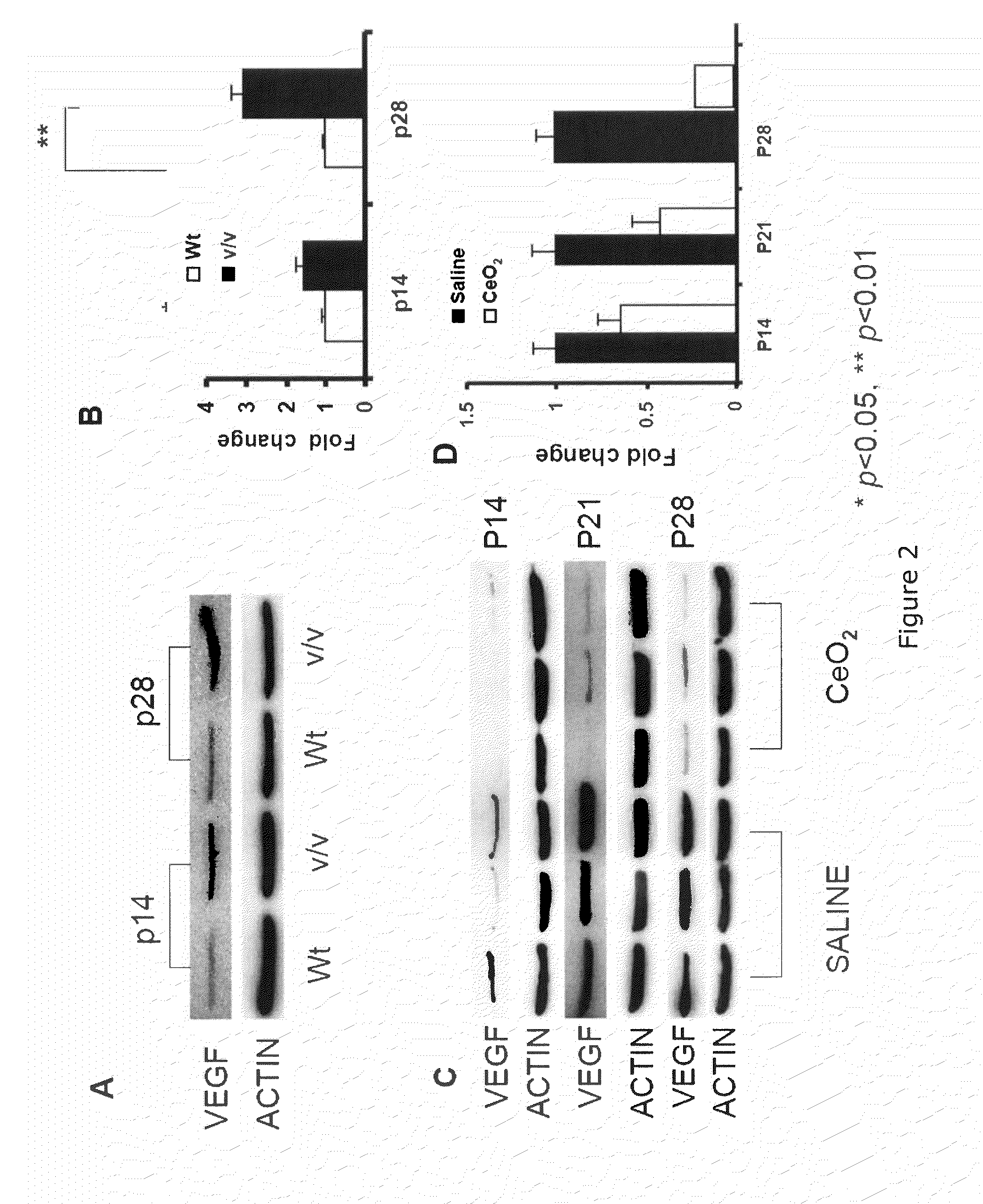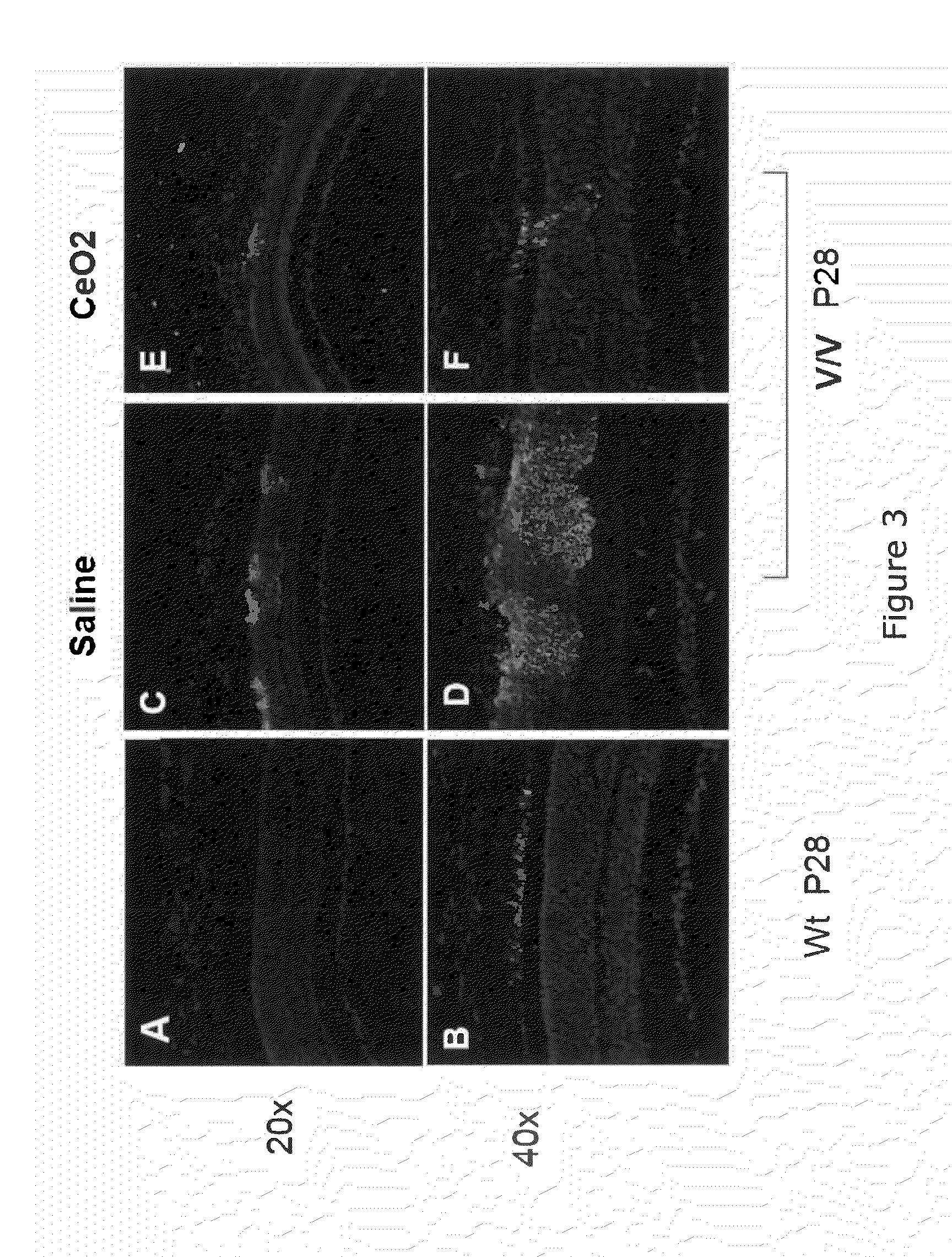Inhibition of retinal cell degeneration or neovascularization by cerium oxide nanoparticles
- Summary
- Abstract
- Description
- Claims
- Application Information
AI Technical Summary
Benefits of technology
Problems solved by technology
Method used
Image
Examples
example 1
[0090]Effects on ROS and ROS-Induced Damage.
[0091]We first performed experiments to determine if there actually was an increase in ROS in the retina of the VLDLr KO mouse and if the nanoceria could reduce the ROS and the damage caused by them. In a cell, the three major sources of intracellular ROS are from 1) mitochondrial oxidative respiration, 2) NADPH-oxidase and 3) Nitrous oxide synthetase (NOS3).
[0092]The 2′,7′-dichloro-dihydro-fluorescein-diacetate (DCF) assay for detection of cellular oxidation by hydrogen peroxide, peroxynitrite and hydroxyl radicals was used with cryostat sections of eyes from normal and VLDLr− / −mice which had been injected intravitreally with either saline or nanoceria on post-natal day 7 (P7) and assayed on post-natal day 28 (P28). Fluorescence microscopy of cryostat sections from 28 day mice (FIG. 1A) detects some DCF signal in the wild type retina but very significant amounts in the VLDLr− / −retina (FIG. 1B). However, injection of the nanoceria on P7 gr...
example 2
[0094]VEGF—Western Blot Data.
[0095]Mice were injected intravitreally with either 1 μl of PBS or 1 ul of PBS plus nanoceria at post-natal day 7P7 and the animals killed on P14, P21 or P28. Retinas were homogenized, subjected to SDS-PAGE, and blotted to nitrocellulose. The bands were detected with primary and secondary antibodies and visualized with an HRP-DAB assay (FIG. 2). Wild type (+ / +) retinas had barely detectable levels of VEGF with or without nanoceria. The VLDLr KO retinas had about an eightfold increase in VEGF compared to the + / + retinas. However, the nanoceria (“nanoparticle”) injected VLDLr KO mice had about 60% less VEGF at day 21. These data indicate that VEGF increased in the VLDLr KO retinas due to ROS and that it decreased because of the nanoceria mediated decrease in ROS.
[0096]The amount of VEGF, as determined by Western blots, is higher in the VLDLr− / −retina than in the wild type retina even at P14 and progressively increases (FIG. 2A). Densitometry (FIG. 2B) indi...
example 3
[0097]VEGF—Localization by Immunofluorescence.
[0098]To determine where VEGF was localized in the wild type and the VLDLr KO retinas and whether the nanoceria had any effect on the localization, Alexa green-conjugated secondary antibodies were used in combination with anti-VEGF primary immunoglobulins. The wild type mouse retinas (C57BL / 6J) (FIG. 3A,B) had very little VEGF and it was localized to the outer segments of the retina. However, the pattern of labeling with anti-VEGF in the VLDLr KO retina (FIG. 3C,D) was heavy but discontinuous; predominantly in the outer and inner segments of photoreceptors; and especially in their perinuclear regions in the ONL adjacent to vascular lesions. The intensity of labeling progressively diminished as the distance from the lesion increased. The age-matched VLDLr mice, which had received an intravitreal injection (1 ul of 1 mM) of nanoceria on P7, had fewer vascular lesions and exhibited greatly reduced staining surrounding the remaining lesions ...
PUM
 Login to View More
Login to View More Abstract
Description
Claims
Application Information
 Login to View More
Login to View More - R&D
- Intellectual Property
- Life Sciences
- Materials
- Tech Scout
- Unparalleled Data Quality
- Higher Quality Content
- 60% Fewer Hallucinations
Browse by: Latest US Patents, China's latest patents, Technical Efficacy Thesaurus, Application Domain, Technology Topic, Popular Technical Reports.
© 2025 PatSnap. All rights reserved.Legal|Privacy policy|Modern Slavery Act Transparency Statement|Sitemap|About US| Contact US: help@patsnap.com



